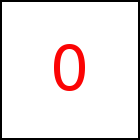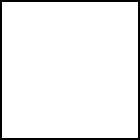Using Custom Fragment Shaders - taccGL™ Tutorial
Note: This page contains information for version 0.61 and still needs update for
version 0.62.
Shaders are computer programs that are compiled and then
downloaded to and executed on the GPU. By writing your own or by
adapting the default shaders one can achieve exeptionel graphic
effects. Unfortunately shaders are written in a special C like
computer language called GLSL, see
the WebGL™
documentation. Descibing this would exceed the scope of this
tutorial. Often you however only need to modify one or two
lines of the default shader, so you only need to learn a small
part of GLSL.
A fragment shader program calculates the color for a single pixel
of the screen. It is started once for each image frame shown on the screen and
for each pixel of each taccgl transition. The following example creates
a new shader named blueShader and attaches it using sc
to a sample taccgl™ transition. The second part of the example
gives the shader code, or more precisely how the default shader
should be modified. The syntax :color asks taccgl™
to replace the lines in the shader, which are calculating the
color by the following code. The following code line col=vec3(0.0,0.0,1.0);
sets the color to blue.
var blueShader=taccgl.ssc('BlueShader').setLighting(false); var b=taccgl.actor("pgMiddleColumnTable").sc(blueShader).dur(2); b.start() | RUN |
<script id="BlueShader" type="x-gsgl/x-shader"> :color col=vec3(0.0,0.0,1.0); </script> | |
The following example calculates the color based on the time ct.
var colorShader=taccgl.ssc('ColorShader').times().setLighting(false); var b=taccgl.actor("pgMiddleColumnTable").sc(colorShader).dur(2); b.start() | RUN |
<script id="ColorShader" type="x-gsgl/x-shader"> :color col=vec3(0.0,1.0-ct,ct); </script> | |
The variables s and t contain the coordinates of the
pixel currently processed. Using el the coordinates of a
particular HTML element ("pgMiddleColumnTable" in the following example) are
provided to the shader. The following example creates color transitions
by calculating relative coordinates of the pixel and using them as color.
var colorCShader=taccgl.ssc('ColorCShader').dynTex().times().el("EL","pgMiddleColumnTable");; var b=taccgl.actor("pgMiddleColumnTable").sc(colorCShader).dur(2); b.start() | RUN |
<script id="ColorCShader" type="x-gsgl/x-shader"> :color col=vec3(0.0,(s-ELS)/ELW,(t-ELT)/ELH); </script> | |
The following example creates a rotating fade-in effect. It sets the
variable a rather than col to affect the alpha value
of certain pixels and make them transparent.
var s=taccgl.ssc('rotatingFadeShader').times().dynTex().el("EL","pgMiddleColumnTable"); var b=taccgl.actor("pgMiddleColumnTable").sc(s).dur(2); b.start() | RUN |
<script id="rotatingFadeShader" type="x-gsgl/x-shader"> :color if (atan(ELMT-t,s-ELMS) <= (-ct+0.50)*2.0*3.14159) a=0.0; </script> | |
The next example creates a blend effect by determining a ampliphication factor f
and the multiplies the color with that factor. It uses :mix instead of :color
which makes the code inserted in an earlier stage of the shader where the colors are not
yet mixed together, see taccglShaderConfig.mix.
var s=taccgl.ssc('circleBlendShader').dynTex().times().el("EL","pgMiddleColumnTable"); var b=taccgl.actor("pgMiddleColumnTable").sc(s).dur(2); b.start() | RUN |
<script id="circleBlendShader" type="x-gsgl/x-shader"> :mix float al=atan(ELMT-t,s-ELMS); float al1=(al+3.14159)/2.0/3.14159; float r=sqrt( (s-ELMS)*(s-ELMS) + (t-ELMT)*(t-ELMT) ); float f = 1.0 - r / ELW * 2.0 - (ct*2.0-1.0); ca*=f; $$?!this.sp.singleTex{ da*=f; $$?} </script> |
|
The next example modifies the texture coordinates before the texture access
using :fragPos.
var s=taccgl.ssc('ShaderSample6').dynTex().times();var b=taccgl.actor(document.body).sc(s).dur(10); b.start() | RUN |
<script id="ShaderSample6" type="x-gsgl/x-shader"> :fragPos float s1=(1.0-t)*ct+s*(1.0-ct); t=(s)*ct+t*(1.0-ct); s=s1; </script> |
|
When experimenting yourself note that in case there is syntax error in the shader code nothing
happens on the screen, while the javascript console shows the shader code and error messages
from the shader compilter.
WebGL™ is a trademark of the Khronos Group Inc.
| 




